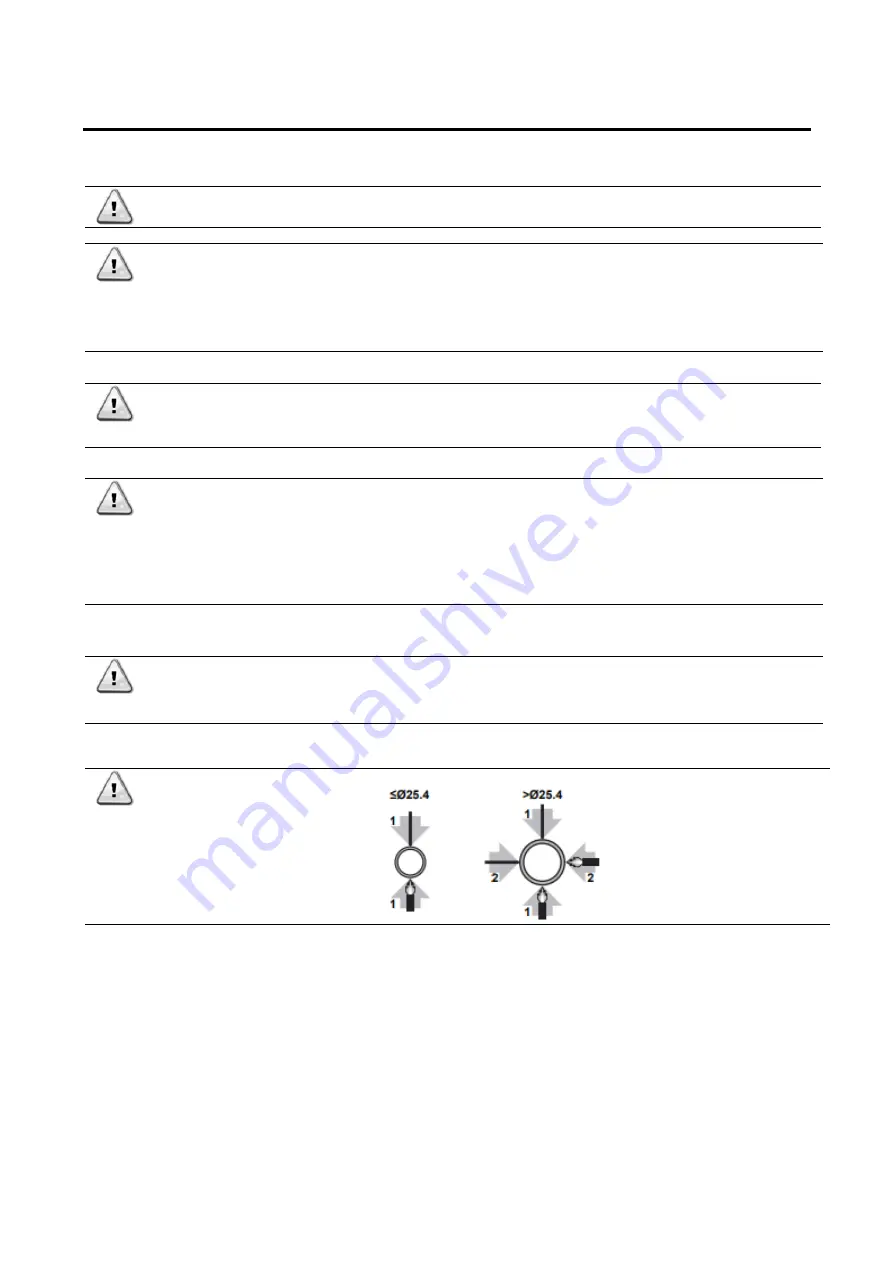
D-EIMHP01505-22_00EN 33/59
6. CONNECTING THE REFRIGERANT PIPING
Precautions when connecting the refrigerant piping
RISK OF BURNING
▪
Avoid anything but the designated refrigerant to get mixed into the refrigerant cycle (e.g., air).
▪
Only use R32 when adding refrigerant.
▪
Only use installation tools (e.g., manifold gauge set) that are exclusively used for R32 installations
to withstand the pressure and to prevent foreign materials (e.g., mineral oils and moisture) from
mixing into the system.
▪
Use caution when passing copper tubes through walls.
Before the connecting procedure, it is important to prevent any impurities from entering the piping
system.
The cap on the connections of the indoor and outdoor unit shall be removed only during the installation
of the connecting piping.
It is highly recommended, prior to the installation of the units, to perform a vacuum within the piping
system using a 2-stage vacuum pump with a non-return valve that can evacuate to a gauge pressure
of −
100.7
kPa (−
1.007 bar) (5 Torr absolute). Then, once the vacuum is completed, let the system in
vacuum for at least 2 hours. After that, pressurise the system with nitrogen gas to a maximum gauge
pressure of 4.0 MPa (40 bar). Never set the gauge pressure higher than the maximum operation
pressure of the unit, i.e., 4.0 MPa (40 bar).
Once the connecting operations begins, is it possible to depressurize the system letting the nitrogen
inside flow out of the piping system.
Connect the refrigerant piping securely before running the compressor. If the refrigerant piping is NOT
connected and the stop valve is open when the compressor is run, air will be sucked in. This will cause
abnormal pressure in the refrigeration cycle, which may result in equipment damage and even injury.
6.1. To braze the pipe end
Precautions when connecting field piping. Add brazing material as shown in the figure below:
▪ When brazing, blow through with nitrogen to prevent creation of large quantities of oxidised film on the inside of the piping.
This film adversely affects valves and compressors in the refrigerating system and prevents proper operation.
▪ Set the nitrogen pressure to 20 kPa (0.2 bar) (just enough so it can be felt on the skin) with a pressure-reducing valve.






























